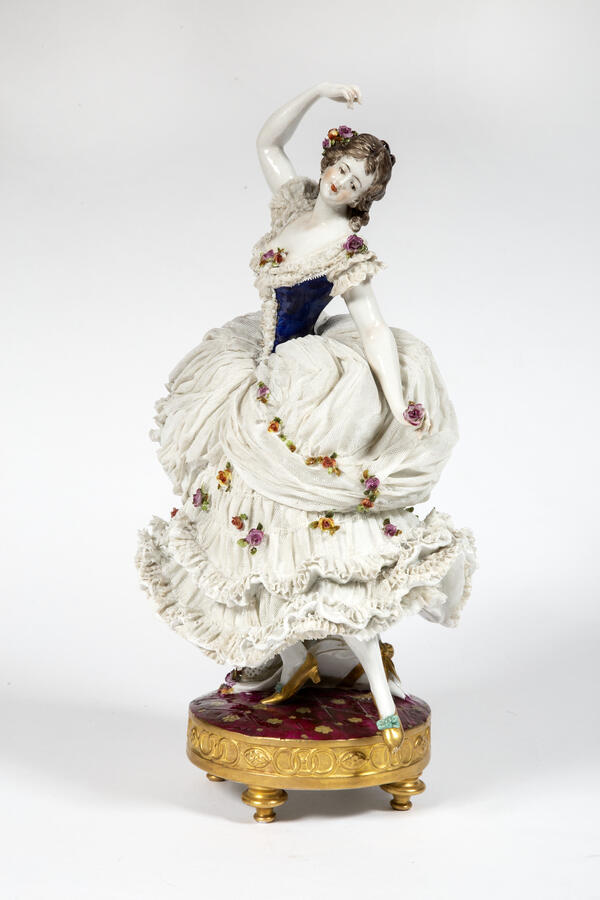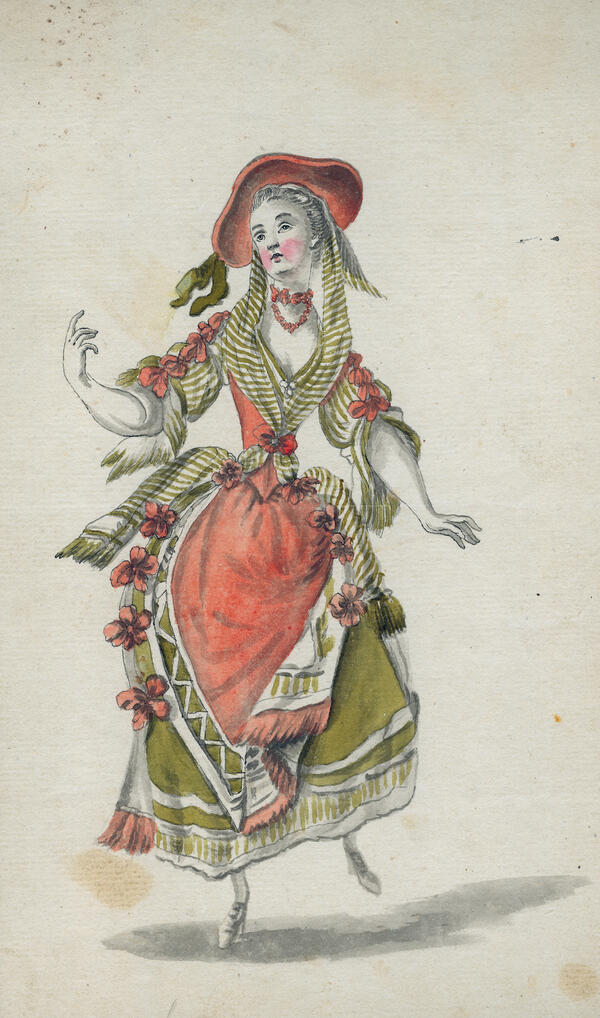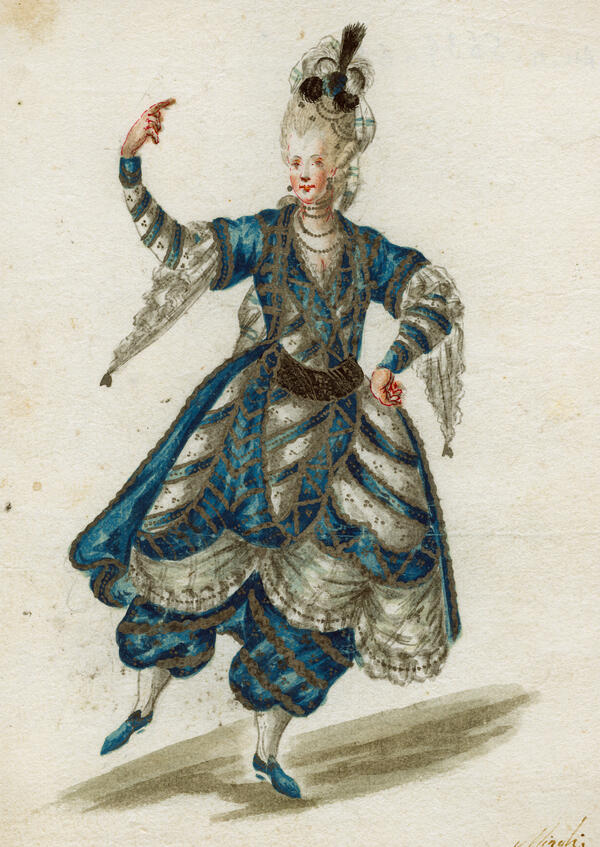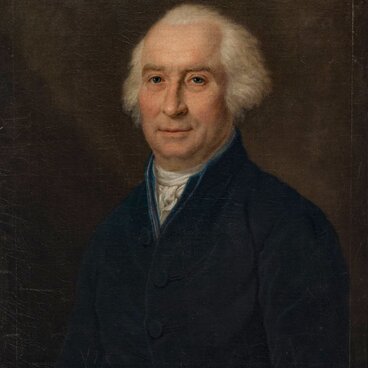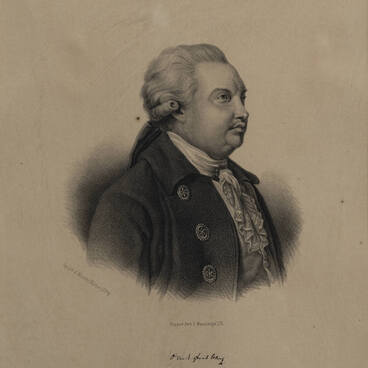The Museum of Theater and Music houses a small porcelain figurine in the Rococo style. It was created by an unknown artisan in the late 18th century in Germany, presumably at the Meissen Porcelain Manufactory. The figurine depicts a young dancer dressed in a puffy dress with snow-white ruffles. The attire is complemented with gold heeled bow shoes and bright flowers scattered over the dancer’s dress and hair. She seems frozen in a graceful and delightful dance with the right arm raised above her head and the left one stretched out along her body.
The Rococo, which superseded the Baroque in the 18th century, was characterized by theatricality, frivolity, and festivity. Women’s costumes in this style had numerous decorative elements such as bows, strings, ribbons, and ruffles. The abundance of jewelry and the elegant and sensual nature of women’s attire were supposed to allude to a delicate flower.
The Rococo, which superseded the Baroque in the 18th century, was characterized by theatricality, frivolity, and festivity. Women’s costumes in this style had numerous decorative elements such as bows, strings, ribbons, and ruffles. The abundance of jewelry and the elegant and sensual nature of women’s attire were supposed to allude to a delicate flower.

